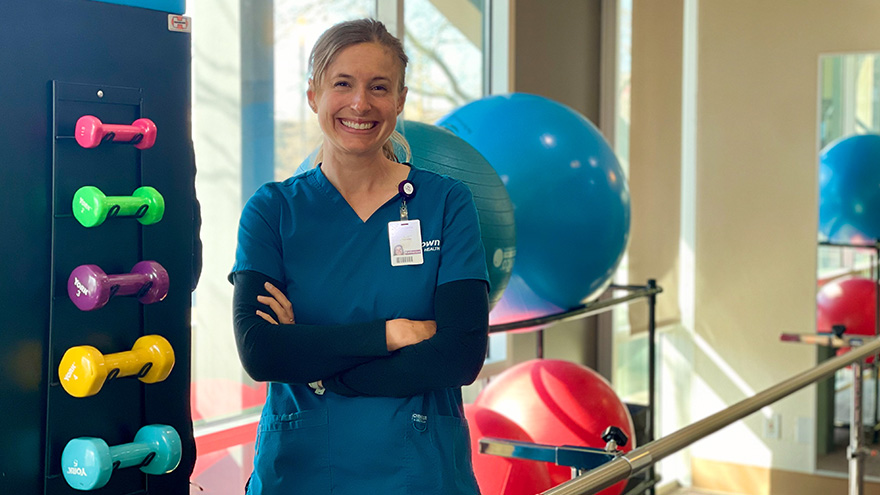Renown Physical Therapy
Our team of physical therapists will partner with you to help improve your function, quality of life and prevent other medical complications that may arise.
March 06, 2022

To recognize World Lymphedema Day, Katherine Bunker, Physical Therapist and Certified Lymphedema Therapist (PT, DPT, CLT) at Renown, shares her experience helping those with lymphedema and lymphatic disease thrive in their daily lives.
Each year, World Lymphedema Day continues to be an advocate-driven celebration and global education opportunity on what it means to live with lymphedema and lymphatic disease. We explore why this cause deserves global recognition each year on March 6 below.
Lymphedema is an abnormal collection of protein-rich fluid that causes swelling just beneath the skin. The fluid, which is filtered through the lymph nodes, makes up a network of tissues that help the body get rid of toxins, waste and other unwanted substances.
According to Katherine Bunker, PT, DPT, CLT at Renown Health, this collection of fluid causes swelling, usually in the arms or legs, but can happen in other areas too. It can also cause discomfort, restricted movement and may increase the risk of infections.
Primary lymphedema is the name of the condition for those born with the disease, which is rare.
Most cases happen when there’s damage to the lymphatic system, this is called secondary lymphedema, which can result from cancer surgery if a lymph node is removed or during cancer radiation treatment if lymph nodes are damaged.
The most common cause of lymphedema in the U.S. is the treatment for breast cancer, which includes axillary lymph node dissection, mastectomies, lumpectomies and/or radiation. Though less common, some patients will develop lymphedema from vascular insufficiencies or from trauma which leads to abnormal ongoing swelling.
Although there is no cure, lymphedema can be managed with the right care.
Fueled by her passion to educate those with lymphedema, Katherine Bunker exclusively works with patients recently diagnosed or currently living with the disease through continued education and complete decongestive therapy.
There are two phases of complete decongestive therapy (CDT). The first phase, called Intensive CDT, targets fluid removal from affected locations with bandaging and exercise.
The second phase, called Improvement CDT, focuses on improving and maintaining the accomplishments of phase one. Treatment during this phase includes compression garments, skin care and self-manual drainage.
Bunker notes that examinations of any abnormal prolonged swelling are key to the early detection of lymphedema. As lymphedema moves in stages, early detection is crucial in helping with the severity of swelling and management of the disease through CDT.
Bunker wants people living with lymphedema to know that while the diagnosis might feel overwhelming, the disease is manageable with CDT and continued education.
Not only is Bunker an advocate for her patients in understanding the disease and management, but Bunker also continues to develop patient education materials and stays up to date on the latest research as it pertains to lymphedema, including the following tips.